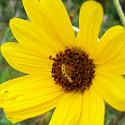Community is important; all too often in our lives as special needs parents, we can and are isolated. We are left to our own devices; we are given inadequate guidance, advice, or information regarding our children and their issues. We don't know where to turn and we don't know who to turn to.
Back when our journey began with our son, there was barely an internet; there was hardly any chatter on autism. I've written about those times: the bad books, the bad shrinks, the bad times, all around. It wasn't easy. There were years of fractured days and splintered nights, times I felt like I was barely holding on, and that no one really understood. And there was no help, no break, little hope. It was not good.
So I get it. I do. I have the utmost compassion and empathy for those new parents struggling with this bewildering diagnosis, their child's staggering needs, the confusion, the isolation, the sheer exhaustion. I get the fear. I get the despair. I can close my eyes and be 22 again, with an infant son who screamed unless he was nursing, to be 25 again and have a preschooler who was nonverbal, still in diapers, and preferably naked. I can close my eyes and be 30 and holding my nine year old son in his hospital bed, after his stroke, his right side paralyzed, his speech gone. I remember those months after the stroke when he had to learn it all over again, when we were once again cleaning his bowel movements off the floor and wherever else he cared to go. I get it.
I get it. I do. It can be incredibly draining to parent children with autism and other neurological disorders. We're ill-equipped to think of ourselves as caregivers past a certain point in our children's lives, and we are often left with no community support, with no respite care, with no one but ourselves to work with our children. And when we have multiple children, the demands increase, especially when each child has an neurological condition. It's daunting, overwhelming, and it can feel like there will never be a light at the end of the tunnel.
And we need to vent. We need a safe place to let it out, our pain, our fear, our frustration, our exhaustion. We need desperately to know we are not alone.
I really do get it. And I get when you are at the bottom of the pit, it's impossible to think there's any other place but the pit. You think it will never get better. You can't remember a time different, and it's impossible for you to imagine how it will ever improve.
And as long as you are in that pit, isolated, alone, and certain in your convictions that it won't get better, it won't.
You may not have put yourself in that pit, but you're there now. And the only person who's going to get you out is you. YOU. Friends can be lined up along the pit, holding their hands down to you, throwing you lifeline after lifeline, but if you don't reach up and grab, you will stay in the pit.
We each of us draw lines, boundaries, that we believe we will not cross until we've crossed them. We may not realize until it's way too late that we've smashed these lines we've drawn, obliterated them out of existence.
We can and should be there for each other, support each other, and we should be able to express when we are in despair, when we are broken, when we need some help.
We must learn to ask for help when we need it, and we need, even as we are mired in that pit, that wasteland that we think goes on forever, to realize that our actions in that pit will follow us out and into the world and into our children's lives.
Our pain does not give us license to hurt or abuse our children. It does not give us license to degrade them or dehumanize them. These are not lines we can cross.
Our children depend on us, need us, demand the better angels of our nature. We are not perfect and we will fail them, but we can not for their sakes or our own afford to fail them when it comes to respecting their innate value and dignity.
I don't know what the answer is, how to respond, what to say, when I've seen that line obliterated. It gives me tremendous pause. But let me suggest this: if all you see is pain and the pit when you see your child, you've walked up to that line and started stepping across it. It's time you reached out and got some help.
Using Task Analysis to Develop Independent Living Skills
-
This article was reposted with permission from Stages Learning and author
Frankie Kietzman. Life is filled with routines. When you’re a student, you
have...
1 week ago









